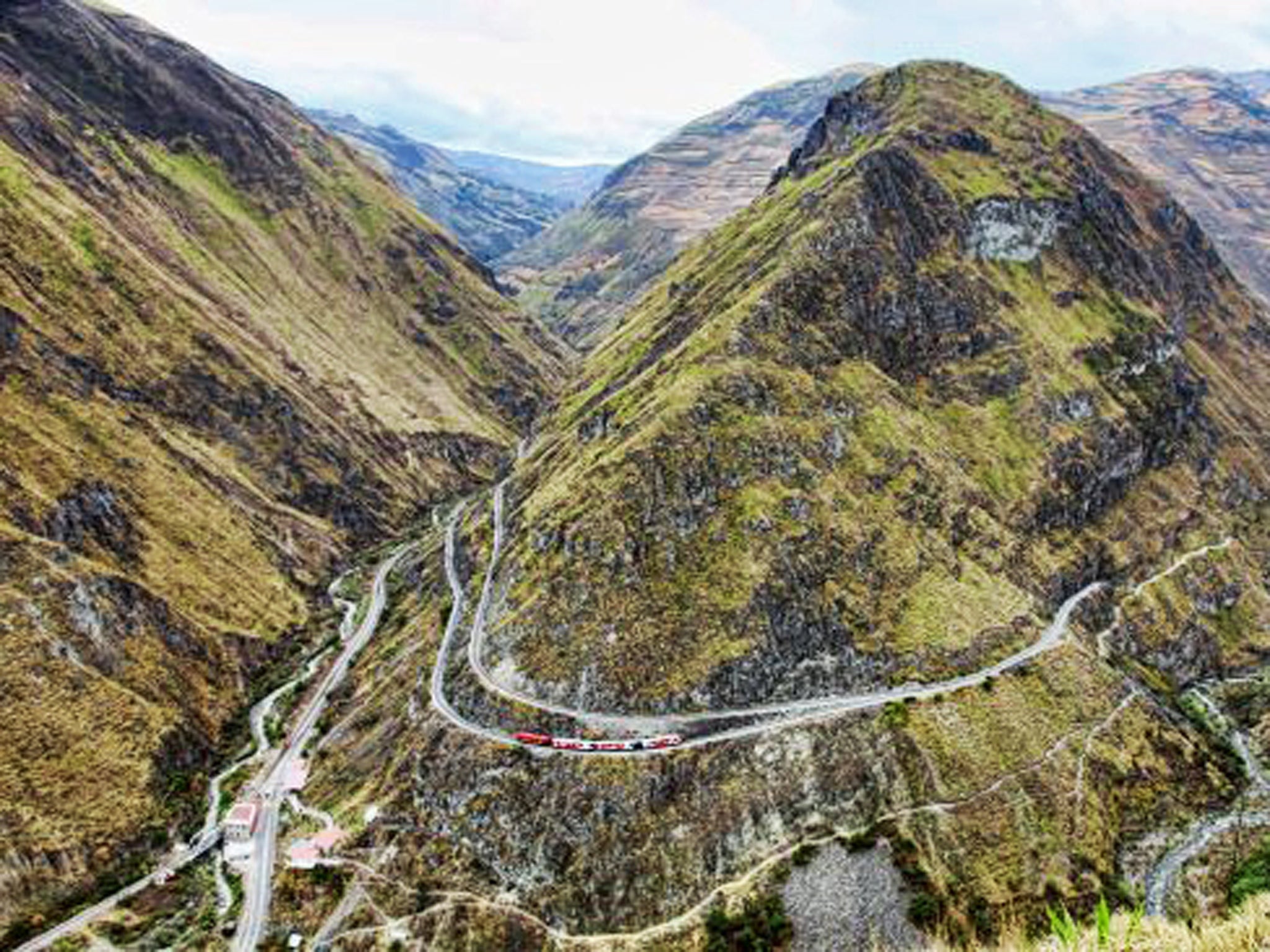The railway line that keeps on rolling
On the road: In Ecuador

Your support helps us to tell the story
This election is still a dead heat, according to most polls. In a fight with such wafer-thin margins, we need reporters on the ground talking to the people Trump and Harris are courting. Your support allows us to keep sending journalists to the story.
The Independent is trusted by 27 million Americans from across the entire political spectrum every month. Unlike many other quality news outlets, we choose not to lock you out of our reporting and analysis with paywalls. But quality journalism must still be paid for.
Help us keep bring these critical stories to light. Your support makes all the difference.
As I boarded the modern, glass-encased railway carriage I couldn't help but think that this had not always been a tourist train. I first rode these rails 25 years ago on the roof of some 1920s-vintage rolling stock. At the time, wheels screeched, Andean scenery lurched and swayed around me, and I hung on for dear life. These thrills came to an abrupt end in 2007, when two tourists were decapitated by an overhead wire and riding the roof was prohibited.
At the dawn of the 20th century this was not a tourist train at all. Rather it was Ecuador's pride and joy, the result of an internationally acclaimed 11-year effort by president Eloy Alfaro and US entrepreneur Archer Harman. Alongside Alfaro's sweeping liberal reforms, these rails carried the country into the new century.
It is a spectacular 464km line with a unique set of switchbacks to climb the daunting slope known as the Devil's Nose. It runs from Durán, outside the port city of Guayaquil, up to Ecuador's capital, Quito, at 2,850m above sea level. The line first passes through 87km of delta lands and then, in another 80km, climbs to 3,238m, before reaching Riobamba in the heart of Ecuador's "Avenue of the Volcanoes". The highest point is 3,619m, after which the line falls and rises on its way to Quito.
The G&Q railway remained the backbone of transportation in Ecuador for more than 60 years, but time and neglect eventually took their toll and by the turn of the millennium only a few short segments remained in service. There was often talk of reviving the railway but only in 2007 did the current government, ideological heir of President Alfaro, undertake this task.
The line from Durán to Quito reopened earlier this year. From new concrete ties to the modern rolling stock, this is unquestionably a formidable achievement, but what remains unclear is the purpose of the refurbished railway. For it still offers only a series of short – still spectacular but no longer cheap – tourist rides, plus an all-inclusive four-day/three-night package priced at US$1,270 (£850). Was this the dream of Eloy Alfaro and Archer Harman?
Footprint's 'Ecuador & Galápagos Dream Trip' is out now, priced £9.99 (footprinttravelguides.com)
Join our commenting forum
Join thought-provoking conversations, follow other Independent readers and see their replies
Comments